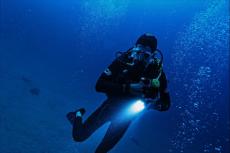Male dolphins form lifelong bonds
Male bottleneck dolphins have been observed working together to boost their chances of finding mates.
Researchers have discovered that male bottleneck dolphins form long-term social groups to help one another find mates and fight off competitors.
It was the first time such behaviour was observed in the animal world.
Their conclusions were based on data collected of 202 Indo-Pacific bottlenose dolphins between 2001 and 2006 in Shark Bay, Australia, using visual and auditory data. In the lab, the researchers then focused on studying the interactions of 121 of individuals for the next decade.
Their findings was published in the Proceedings of the National Academy of Sciences journal.
They discovered that the male dolphins formed alliances among two or three members, and the groups might grow up to 14 members. Such alliances, which lasted for decades or their entire lives, were formed when the dolphins were still young.
“These dolphins have long-term stable alliances, and they have intergroup alliances. Alliances of alliances of alliances, really,” said lead author Dr Richard Connor, a behavioural ecologist at the University of Massachusetts Dartmouth.
Within the groups, the members helped one another find mates, even to the extent of “stealing” females from other dolphins and even defending against "theft attempts."
Stephanie King, professor in animal behaviour at Bristol University, elaborated: “What happens as a male, you might be in a trio, herding a female. And if someone comes to take that female, the other males in your team and your second-order alliance come in and help you.”
Helpful alliances
If there was a possible threat, two second-order alliances would combine to form a larger alliance. The researchers observed that every male was directly connected to 22 to 50 other dolphins.
King added that it was their cooperative relationships, rather than alliance size, that determined their breeding success.
The researchers said this is the only non-human example of these kinds of strategic multilevel alliances to have been observed. They suggested that the dolphins’ large brains enabled them to keep track of the different relationships.
“I would say that dolphins and humans have converged in the evolution of between-group alliances—an incredibly complex social system,” said Connor.



























